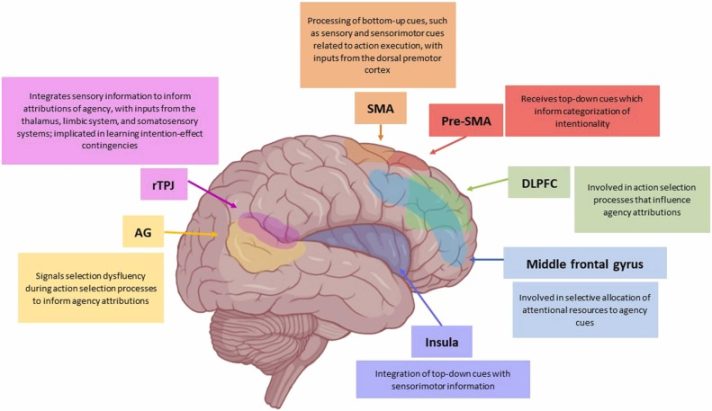Ultimately, the market makers won wealth, while retail investors gained excitement.
Written by: Chilla
Translated by: AididiaoJP, Foresigh News
Cryptocurrency market trading is rapidly changing. The idea of easy money is overwhelming structured strategies. This phenomenon may seem simple at first glance, but it is actually more complex and diverse.
This is not only the impact of an evolving ecosystem; sociological factors are also involved, which may be crucial for understanding the future narrative direction.
Intent Binding and Self-Control
Autonomy refers to our perception of ourselves as the initiators of our actions and their consequences. This is likely one of the main driving forces pushing people into the trading world, away from those who work under others' instructions.
Ultimately, the goal is to achieve freedom and independence. By making our own decisions to attain financial freedom, we do not have to submit to the will of others.
Only a few things, like entrepreneurship, allow for this. And if you think about it, trading is somewhat procedural, structured, and governed by clear rules. Of course, it is generally like this. By pressing a series of buttons and maintaining an underlying strategy, you can extract value from the market.
With internet communication devices ubiquitous, the more immediate the feedback from each trade we make, the stronger the sense of control we feel. This is where the concept of intent binding comes into play.
Through this process, the brain shortens the time distance between action and consequence, giving us the illusion of truly controlling the process.
So, what gives people a stronger sense of intent binding and self-control?
Meme Coins
When we can immediately see the consequences of our actions (whether positive or negative expected value), we feel like we are the masters of our fate, unlike situations where results take a long time to manifest.
Although it may seem strange, structured trading requires time and energy, as well as longer-term thinking, which makes it more distant from what the new generation seeking attention is interested in.
Attention spans are shrinking. If results do not appear instantly, people lack the desire or time to sit down and backtest the outcomes of their work.
What’s the result? A trend towards things that users can immediately touch, like meme coins.
Since we have already experienced the dopamine rush after buying (or selling) a meme coin, why place a limit order to provide liquidity to the order book and wait? Dopamine itself can bring a stronger sense of control, even if only at a subconscious level. In reality, the situation is often quite the opposite.
Thus, many traders prefer the frenzy of trading meme coins, which have fleeting value but provide a high sense of self-control, rather than more structured and slower strategies based on limit orders or mature assets, which is not surprising.
But that’s not all. This is a mix of various motivations, all pointing in the same direction. Neuroscience also tends to align with this trajectory.
The Neuroscience Behind Intent Binding
Don’t marry your positions, right? Yes, we’ve heard KOLs say this so many times that we should have internalized it by now. But this bias is precisely due to the concept of embodiment.
Unlike mainstream tokens that are seen as cold, distant, and institutionalized, having more direct, almost physical contact with a "niche" coin that becomes a symbol of belonging or identity results in the brain (more than the wallet) pushing people to seek experiences that provide instant gratification and a stronger sense of self.
People prefer to hold wif or certain meme coins, feeling part of a movement and gaining an immediate sense of "rightness" in alignment with others, rather than spending hours monotonously refining their trading strategies. Buying a coin provides instant input and output: you act, you expect a reward, and you gain immediate psychological satisfaction, making waiting feel boring.

Image taken from "The sense of agency for brain disorders: A comprehensive review and proposed framework" by Rubina A. Malik, Carl Michael Galang, Elizabeth Finger
From a neuroscience perspective, this is closely related to how the brain encodes intent binding. The feeling of "I caused this outcome" involves the premotor cortex, supplementary motor area, and anterior insula, which integrate intention, action, and outcome. When the output is immediate, dopamine strengthens the connection between action and reward, making the experience more satisfying and "right."
In contrast, strategies with delayed results do not activate these circuits in the same way, reducing the subjective sense of self-control and making the process feel boring or even "wrong."
This resonates deeply with me.
Conclusion
Yes, the narrative of perpetual decentralized exchanges is now spreading, but this does not negate the reasoning above. It is primarily a derivative of market conditions, under which you can gain direct rewards through trading points. In fact, this reinforces the argument of this article.
Moreover, I am not talking about meme coin trading itself, but rather a different way of trading, where the reward is the action itself, triggering the dopamine rush, rather than the pursuit of ultimate monetary gain.
The sensory stimulation itself is the goal. Market makers won, users lost, but at least they participated. At least they had the illusion of choice, as the consequences followed closely and were a direct response to the decisions made.
This is more like going to a casino than building a strategy. However, it is not for me to judge. I have not been immune to this myself, not at all.
But the resulting concept indicates a fundamental shift in the basic idea of trading. In this shift, intent binding plays an increasingly important role.
In fact, emotions dominate reason.
免责声明:本文章仅代表作者个人观点,不代表本平台的立场和观点。本文章仅供信息分享,不构成对任何人的任何投资建议。用户与作者之间的任何争议,与本平台无关。如网页中刊载的文章或图片涉及侵权,请提供相关的权利证明和身份证明发送邮件到support@aicoin.com,本平台相关工作人员将会进行核查。




